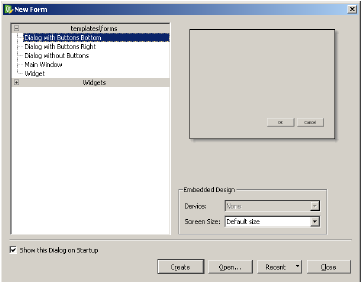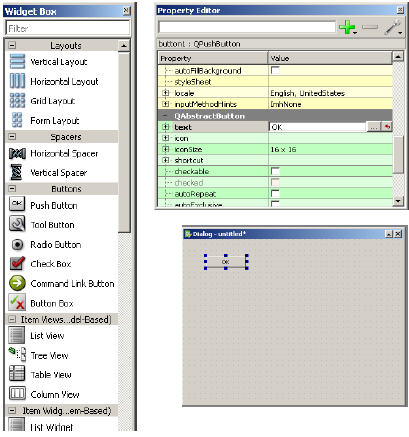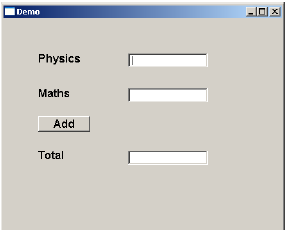
- PyQt Tutorial
- PyQt - Home
- PyQt - Introduction
- PyQt - Hello World
- PyQt - Major Classes
- PyQt - Using Qt Designer
- PyQt - Signals and Slots
- PyQt - Layout Management
- PyQt - Basic Widgets
- PyQt - QDialog Class
- PyQt - QMessageBox
- PyQt - Multiple Document Interface
- PyQt - Drag and Drop
- PyQt - Database Handling
- PyQt - Drawing API
- PyQt - BrushStyle Constants
- PyQt - QClipboard
- PyQt - QPixmap Class
- PyQt Useful Resources
- PyQt - Quick Guide
- PyQt - Useful Resources
- PyQt - Discussion
PyQt - Using Qt Designer
The PyQt installer comes with a GUI builder tool called Qt Designer. Using its simple drag and drop interface, a GUI interface can be quickly built without having to write the code. It is however, not an IDE such as Visual Studio. Hence, Qt Designer does not have the facility to debug and build the application.
Creation of a GUI interface using Qt Designer starts with choosing a top level window for the application.

You can then drag and drop required widgets from the widget box on the left pane. You can also assign value to properties of widget laid on the form.

The designed form is saved as demo.ui. This ui file contains XML representation of widgets and their properties in the design. This design is translated into Python equivalent by using pyuic4 command line utility. This utility is a wrapper for uic module. The usage of pyuic4 is as follows −
pyuic4 –x demo.ui –o demo.py
In the above command, -x switch adds a small amount of additional code to the generated XML so that it becomes a self-executable standalone application.
if __name__ == "__main__": import sys app = QtGui.QApplication(sys.argv) Dialog = QtGui.QDialog() ui = Ui_Dialog() ui.setupUi(Dialog) Dialog.show() sys.exit(app.exec_())
The resultant python script is executed to show the following dialog box −

The user can input data in input fields but clicking on Add button will not generate any action as it is not associated with any function. Reacting to user-generated response is called as event handling.